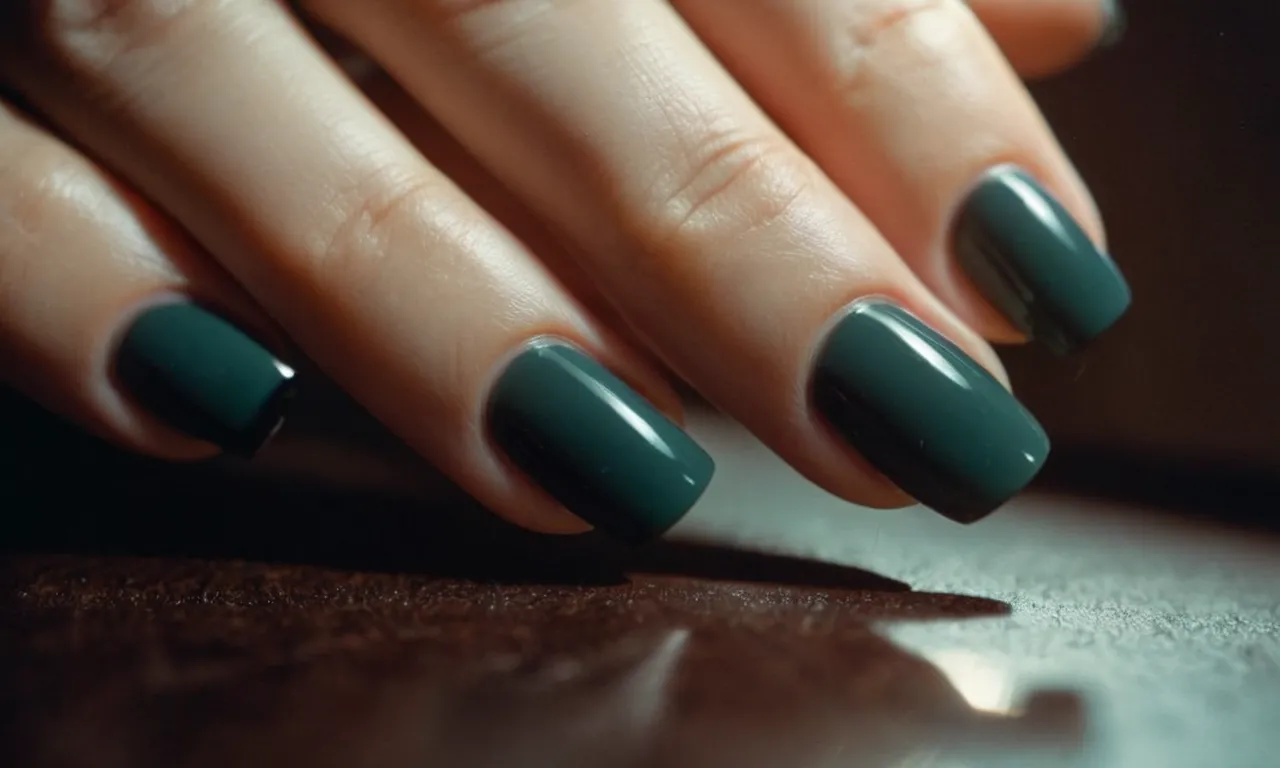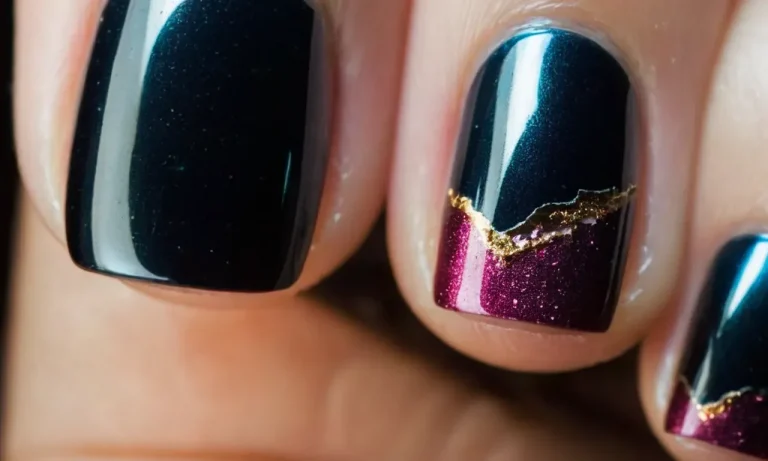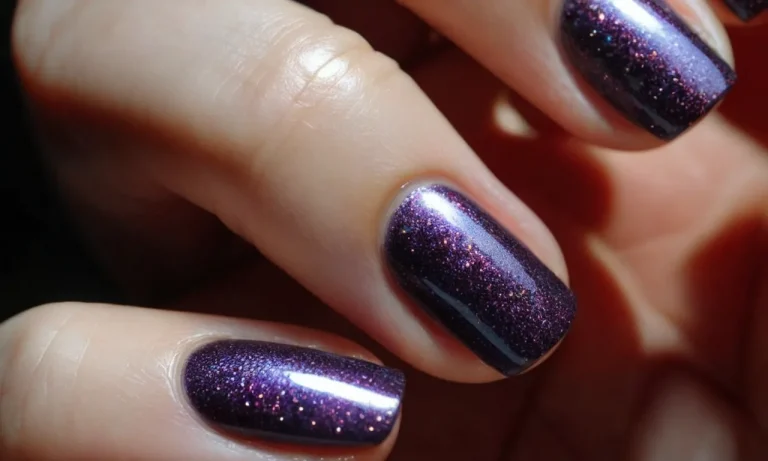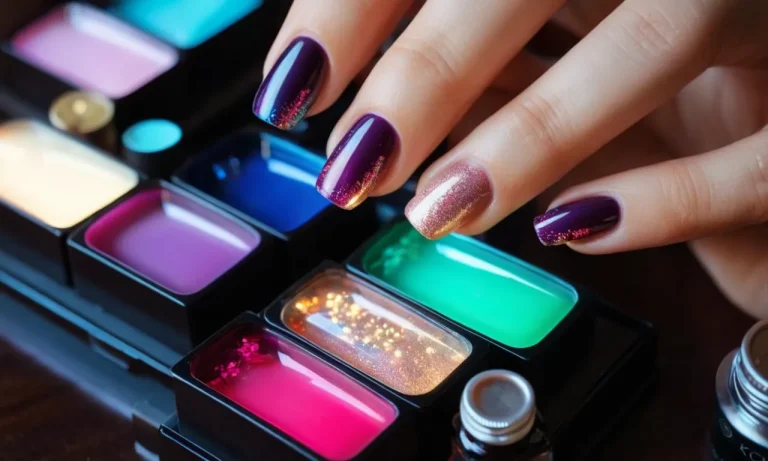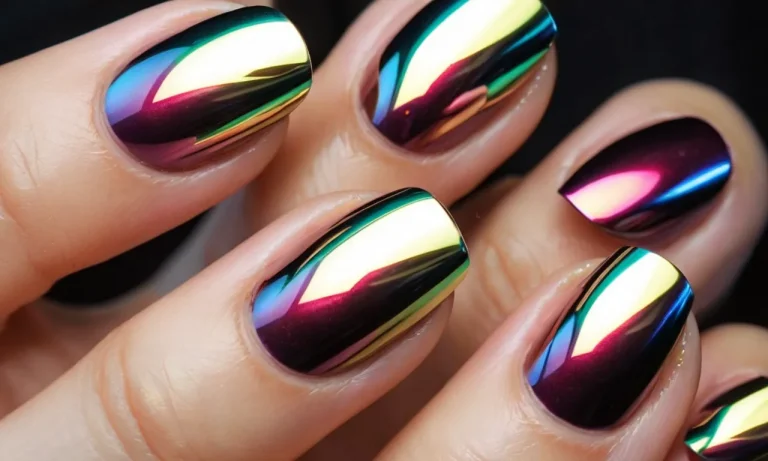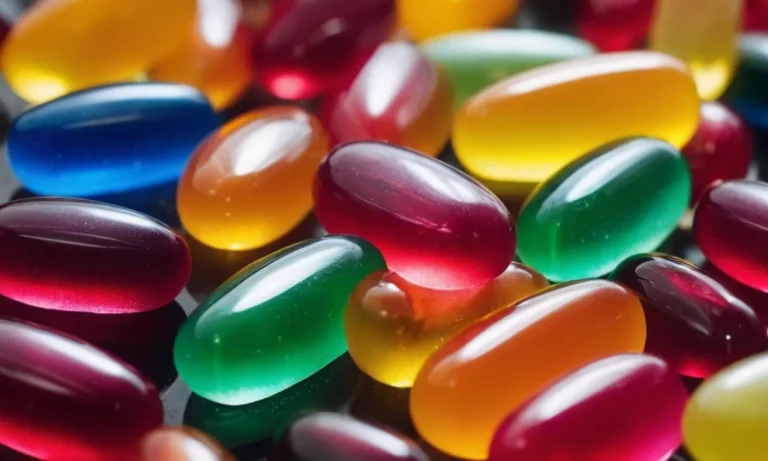Do Nails Grow From The Top Or Bottom? A Detailed Look
If you’ve ever gotten a manicure, you’ve probably wondered – do my nails grow from the top or bottom? Understanding nail growth is important for proper nail care and maintenance. Let’s take a close look at the anatomy of the nail to solve this mystery once and for all.
If you’re short on time, here’s a quick answer: nails grow from the nail matrix under the cuticle near the base of the nail, not from the tip. As new cells are produced in the matrix, the older nail cells are pushed forward creating nail growth.
Anatomy of the Nail
Nail Plate
The nail plate is the hard, translucent part of the nail that we see. It is made up of keratin, which is a protein that also makes up the hair and the outer layer of skin. The nail plate grows from the nail matrix under the cuticle.
As new nail cells are produced in the matrix, the older nail plate is pushed forward. This is how nails grow longer. The nail plate protects the delicate nail bed underneath.
Nail Bed
The nail bed is the skin beneath the nail plate. It is rich in blood vessels, nerves, and melanocytes, which produce skin pigment. The nail bed connects the nail plate to the finger or toe. As new nail plate cells are produced, they adhere to the nail bed, allowing the nail to grow forward.
The pinkish appearance of the nail bed gives a natural base color to the nail plate.
Nail Matrix
The nail matrix, also called the matrix germinativum, is the part of the nail under the cuticle from which the nail plate originates. The matrix contains nerves, lymph and blood vessels which nourish the nail as it grows.
Cells in the matrix called onychocytes undergo mitosis and produce new keratin cells. These keratinocytes are pushed forward and compacted into layers that make up the rigid nail plate.
Cuticle
The cuticle is the semi-circular layer of dead skin cells at the base of the nail plate near the nail root. It seals and protects the new, living nail plate cells from bacteria and dirt as they emerge from the nail matrix. The cuticle also guides the forward growth of the nail plate.
As more keratinocytes are produced in the nail matrix, they push the existing nail plate forward over the nail bed, and the cuticle moves with it.
Lunula
The lunula is the white, half-moon shaped base of the visible nail plate. It is the part of the matrix that can be seen through the transparent nail. The lunula is largest in the thumb and gets smaller towards the pinky finger. Some people may have very faint or absent lunulas.
The size and visibility of the lunula may change with age, nutrient status, and nail damage.
Where Nail Growth Originates
The Nail Matrix Produces New Cells
Nails originate in the nail matrix, which is the part of the nail under the skin at the lunula (the whitish half-moon shape at the base of the nail). The nail matrix contains nerves, lymph and blood vessels which stimulate fast-growing cells that become hardened keratin cells which make up the nail plate.
These nail matrix cells divide rapidly, pushing older nail cells forward toward the fingertips at a rate of around 1 mm per week. So while the part of the nail you see is dead keratin, the root where new cells are formed is very much alive.
Nail Cells Push Forward As They Grow
As new nail plate cells are formed in the matrix, the older cells get pushed forward toward the fingertips and become compacted and hardened into layers of keratin. The seals between these compacted cells are waterproof, which helps protect the fingers and toes.
So while we typically think of fingernails as growing from the base outwards, technically new cells are formed inside the skin and then pushed outward from the matrix underneath as more cells form behind them.
The matrix cells regenerate rapidly, which is why nails can regrow if they get damaged or removed.
Growth Rate Varies By Finger
While the average nail growth rate is around 1 mm per week, the specific growth rate can vary depending on the finger or toe. According to an Australian study published in the scientific journal Nature (https://www.nature.com/articles/s41598-017-10821-9), the middle fingernail has the fastest average growth at around 0.123 mm per day, while the toenail grows more slowly at just 0.03 mm per day.
Nail growth may even vary across different fingers for the same person depending on their daily use and pressure on the fingertips andmatrix underneath.
| Finger | Average Growth per Day |
|---|---|
| Middle Finger | 0.123 mm |
| Index Finger | 0.116 mm |
| Ring Finger | 0.098 mm |
| Little Finger | 0.089 mm |
| Toenails | 0.03 mm |
The nail growth rate also varies depending on factors like age, gender, nutrition and health. But while rates may fluctuate up and down over time, the matrix continues producing new cells to push the older keratin forward as our nails grow throughout our lives.
Nutrition for Nail Growth
Providing the body with proper nutrition is crucial for healthy nail growth. The nutrients in the bloodstream are supplied to the nail matrix where keratin production occurs. Certain vitamins, minerals and adequate hydration are key for optimal growth.
Blood Supply Brings Nutrients
The nail matrix at the base of the nail contains blood vessels that provide nutrients for growth. As new cells are produced in the matrix, they push older cells forward, eventually hardening into keratin, the protein that makes up nails.
Without proper blood flow bringing nutrients, nail growth slows. Conditions causing poor circulation like diabetes and peripheral artery disease can therefore impact growth.
Key Vitamins and Minerals
Biotin is a B complex vitamin that aids enzyme reactions needed for keratin production. Studies show that biotin supplements support nail growth and reduce brittleness.Iron carries oxygen in the blood that cells need for energy and growth. Low iron reduces blood supply to the nails, stunting growth. This causes nails to become concave or spoon-shaped.Zinc supports cell reproduction and immune function. Without adequate zinc intake, white spots may appear on nails due to slowed growth.Calcium promotes nail hardness and integrity. Its deficiency causes dry, brittle, peeling nails.
Other nutrients like folic acid, vitamin C and selenium also support nail cell production and strength when consumed adequately.
Dehydration Impacts Growth
Being even mildly dehydrated reduces blood volume. This decreases circulation, limiting the supply of nutrients and oxygen to nail tissue.
| Hydration Level | Impact on Nails |
| Mild dehydration | 20% drop in growth rate |
| Moderate dehydration | Growth stops completely |
Therefore, meeting daily fluid intake guidelines helps nails get the constant nutrient supply they require for uninterrupted development.
Factors Affecting Growth Rate
Age and Hormones
Nail growth rate slows down as we age. This is due to changes in hormones, circulation, and cell turnover. Nails grow fastest in our teens and 20s when hormones are surging. During pregnancy, increased estrogen levels can cause nails to grow faster too.
After menopause, lower estrogen levels lead to slower nail growth.
Health Conditions
Certain health conditions affect nail growth rate. For example, hypothyroidism slows down cell turnover, leading to slower nail growth. Diabetes and peripheral vascular disease reduce circulation, also slowing growth. Skin conditions like psoriasis and eczema can disrupt nail growth as well.
Medications
Some medications influence nail growth rate. Chemotherapy drugs often cause nail changes like ridging and discoloration. Retinoids used for acne treatment can cause increased nail fragility and slow growth. Oral steroids may temporarily accelerate nail growth.
External Damage
Nails grow from the base, so damage to the nail bed or cuticle can significantly affect growth. Injuries, infections, and conditions like nail biting put stress on the nail matrix where new cells are formed. This disrupts normal growth.
Using your nails as tools by digging, prying, or scratching leads to external damage too.
Tips for Healthy Nail Growth
Moisturize Cuticles
Keeping the skin around your nails hydrated is crucial for healthy nail growth. Massaging cuticle oil or petroleum jelly into the cuticles and nail beds every day helps retain moisture. Products with vitamin E, coconut oil, or shea butter work wonderfully to nourish the area surrounding nails.
Properly hydrating this skin encourages strong nail growth and prevents painful hangnails or infections.
Consider Supplements
Certain vitamins and minerals play key roles in aiding nail health. Getting enough biotin, zinc, folic acid, and vitamins C and B12 in your diet or through supplements bolsters nail strength and encourages growth.
Deficiencies in these nutrients often manifest in brittle, discolored nails that don’t properly grow. A daily biotin supplement around 2,500 mcg combined with a balanced diet provides building blocks for tough keratin that makes up nails.
Protect Nails from Damage
Preventing damage to nails helps maintain growth. Using moisturizing gloves for household cleaning and frequent handwashing prevents drying. Buffing nails properly smooths them while avoiding thinning the nail plate.
Gentle filing in one direction reduces splits and cracks versus sawing back and forth. Additionally, avoid using nails as tools to pry open objects. The stress fractures weaken nails, causing growth abnormalities and increasing infection risks in the nail bed.
See a Doctor if Needed
Sometimes nail health suffers without apparent causes. Consulting a dermatologist helps diagnose underlying issues interfering with growth. Doctors identify nutritional deficiencies through bloodwork, test for illnesses inhibiting nail health, and provide treatment guidance.
For example, oral or topical medications combat stubborn fungal infections. Getting professional help for unhealthy nails leads to proper diagnosis and therapies to revive normal growth.
Conclusion
Now that you understand nails grow from the nail matrix under the cuticle, not the tip, you can properly care for your nails.
Knowing what impacts nail growth rate allows you to troubleshoot problems and promote health. With proper care, your nails will grow long and strong!
Understanding the anatomy behind nail growth helps solve the mystery of whether nails grow from the top or bottom. Hopefully this guide gave you all the details you were looking for!

